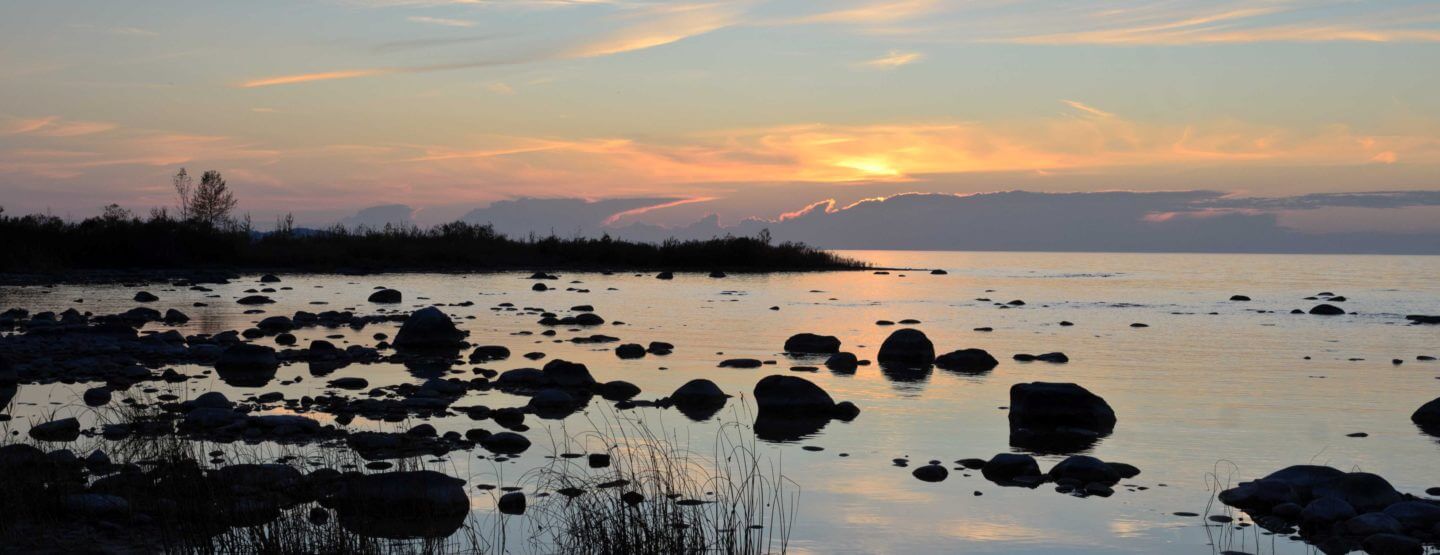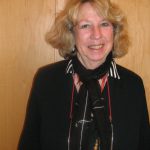The wind never seems to stops blowing at the tip of the Leelanau Peninsula. Walk across this small promontory, which stretches north into the dark, early-winter waters of Lake Michigan, and you’ll feel like you’re on the water, even when you’re on the land, because what you can see in front of you and on two sides, is iron-gray water.
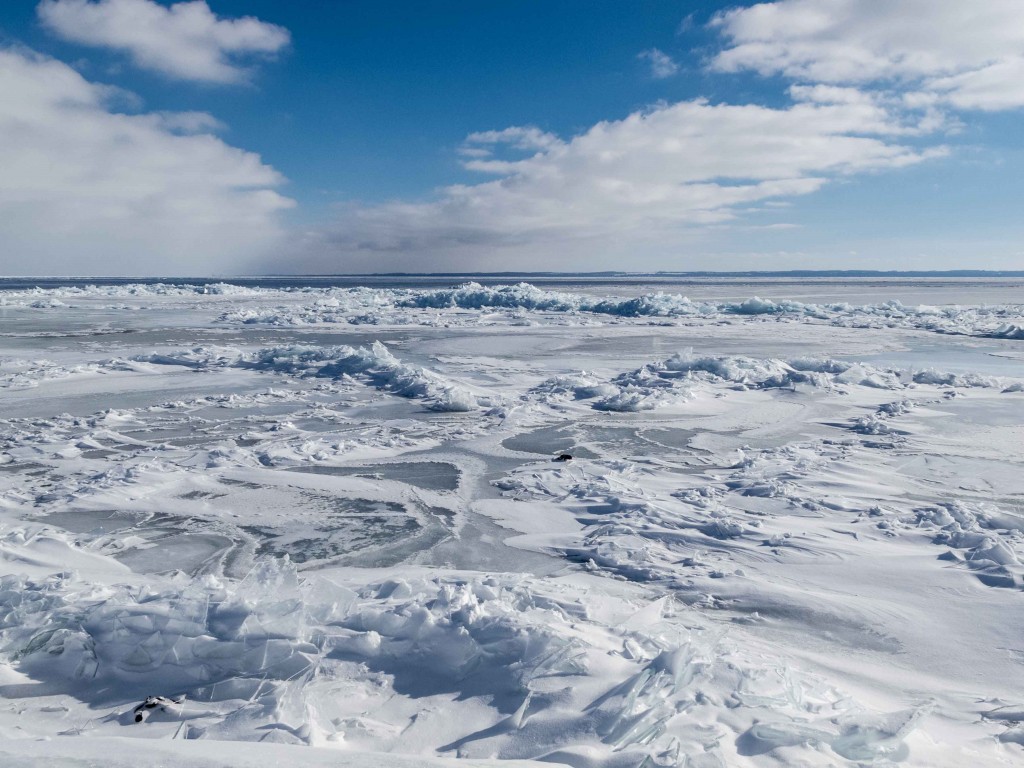
Facing north, there’s an apron of boulders around the shore, and beyond that, the curve of the horizon over Lake Michigan. When you look west, you see water. When you look east, you see water. You’ve come to a place where you can see the sun rise and set over the water.
The Lighthouse West Natural Area was created by the Leelanau Conservancy in 2004 and is near the Leelanau State Park. In mid-December 2016, there’s two feet of “lake effect” snow on the 42 acres of Conservancy land.
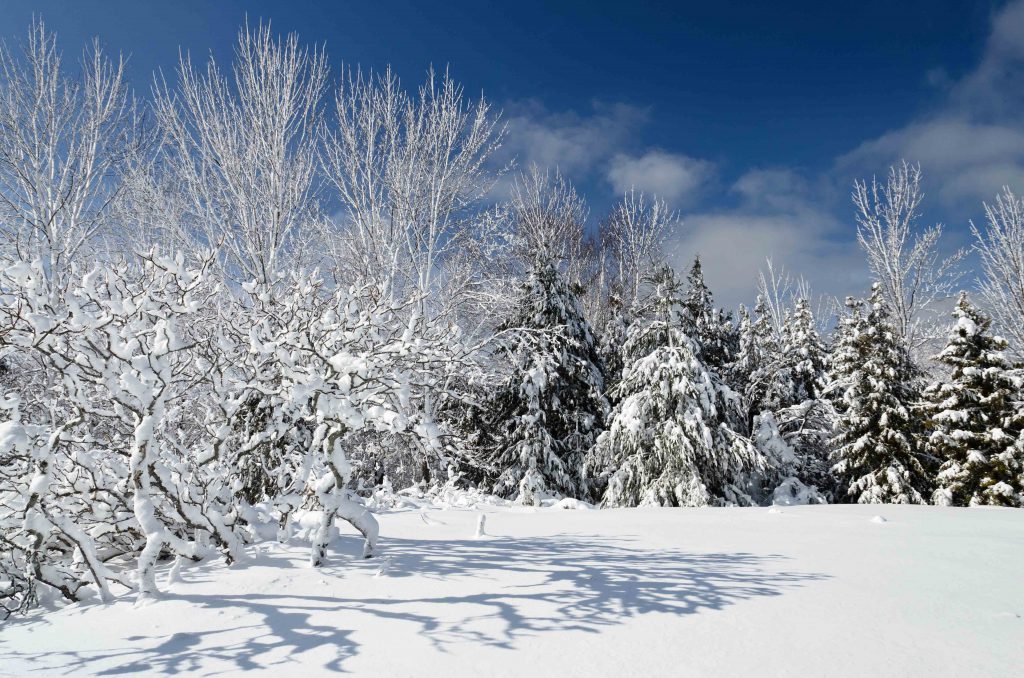
Ed Ketterer, a board member and docent for the Leelanau Conservancy lived for a number of years near the Lighthouse West Natural Area. He points out the tracks in the snow. “A deer,” he says, “see how they drag their feet?” Other small tracks he thinks might belong to a fox. “We have a lot of fox here,” he says. “We have bobcat. Sometimes bear.” He moves through a clearing and points out the old apple orchard, a cedar hedge that used to be part of the surroundings of the farmhouse that burned down some time ago. “Wild blackberries,” he says, “in the summer.”
It’s quiet, except for the wind. The wind makes a faint music as it passes through the trees and over the water. The Aeolian sounds, the strong winds flowing past the tree branches, produce an almost musical tune and at first you think you’ve imagined it and then you realize that it is, in fact, the wind, and that the day is so quiet, you can hear it make its music. The wind is the proud natural element here at the tip of the peninsula.

The woods to the south, on the other side of Cathead Road, are also protected as part of the Leelanau State Park. The black trees look like the enharmonic piano keys, black against the white snow. This is the kind of day, and this is the kind of place, where one can imagine seeing a bobcat. But, one reminds oneself, bobcats are nocturnal and in winter are likely to be somewhere out of the wind, in a tag alder and cedar swamp, preferably one with rabbits. A bobcat looks like a large housecat, but it’s not a housecat. It can bring down a small deer. They are good hunters.
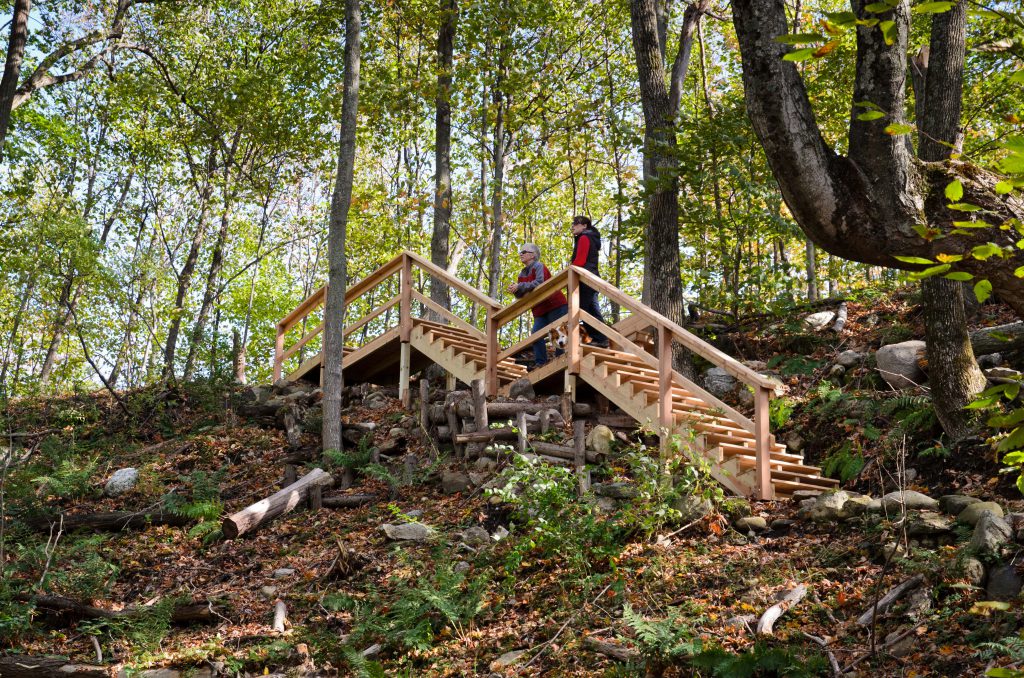
Sitting in his car, Ketterer shows aerial photographs of the land. “In 1938, this was an open field. You can see in the photo, how it was still a field in 1963, but you can see how it’s been reforesting itself from the northwest, the direction of the prevailing winds. Now we have cedars thirty feet high.” He’s clearly pleased with the positive direction the woods are taking. Ketterer grew up in Lorain, Ohio near the industrial port of Cleveland. He says his parents’ home was a half mile from Lake Erie and he always loved the beach there. “But this area is different,” he says. For his docent bio, Ed writes, “Early on I developed an affinity for the north, with its clear, balsam-scented air, sparkling waters and abundant wildlife. Leelanau is true north country.”
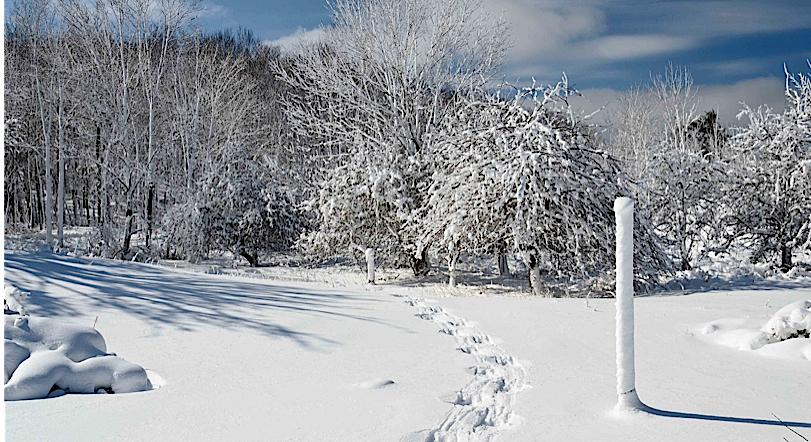
In the spring the birds come back. This is part of the flyway for birds coming south from Mexico and going north to Canada. The Conservancy’s 42 acres and the Michigan State Park’s 1700 acres create a haven for birds and wildlife. The hermit thrush likes the deep wood and often sings at dawn and at dusk. It has a double voice box and can harmonize with itself. Something about the tone of the notes, especially when they sing in the woods, pierces through where words can’t reach. Poet Gerard Manley Hopkins describes the sound of the thrush, “through the echoing timbers” where the sweet notes, “do rinse and wring the ear” and “it strikes like lightnings to hear him sing.”
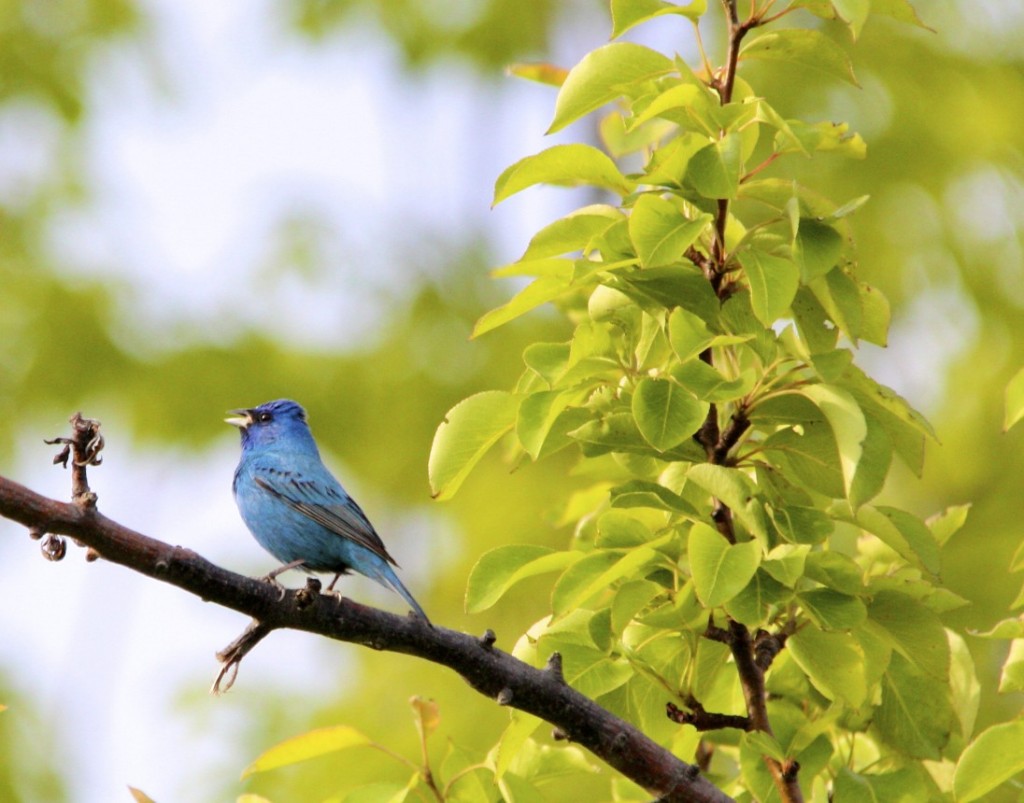
On December 21, 2016, the official winter solstice, the Light House West Natural Area is an expanse of faintly blue, soundless snow. The sun rose this morning out over the water to the east, a vertical column of soft and fuzzy, pinkish-orange mist, and tried valiantly all day to break through the heavy cloud cover, but the vulcanized skies were too much for it. Now, at two in the afternoon at Cathead Point, as the sun is sinking in the west, it feels as if the sun is exhausted from its efforts.
In the waning light of a December afternoon, there’s the soft soughing wind, the bluish snow beneath the lowering sky, the trailing, tattered, still-green leaves on the grapevines, valiantly fluttering in the breeze, the ephemeral essence of winter’s delicate beauty.
Read Kathleen Stocking’s Essay on Chippewa Run Natural Area
Read Kathleen Stocking’s Essay on Houdek Dunes Natural Area
Read Kathleen Stocking’s Essay on Kehl Lake Natural Area
About the Author: Kathleen Stocking is an award-winning essayist who lives on the Leelanau Peninsula. Her third book, “The Long Arc of the Universe,” was published in 2016.
From a New York Times review: “All of us are watchers, but few are observers. Missing are the village elders and seers, the astute perceivers who interpreted life and effort through nature and the primal cycles. Kathleen Stocking is one of those seers, and she’s delightful.”

